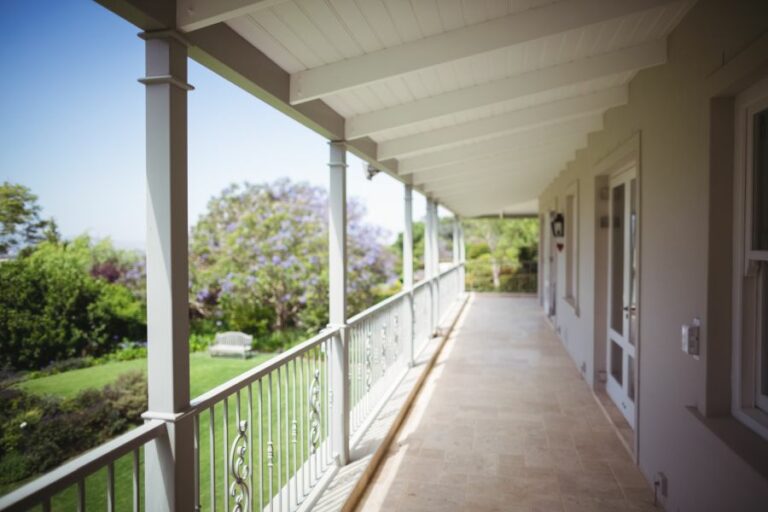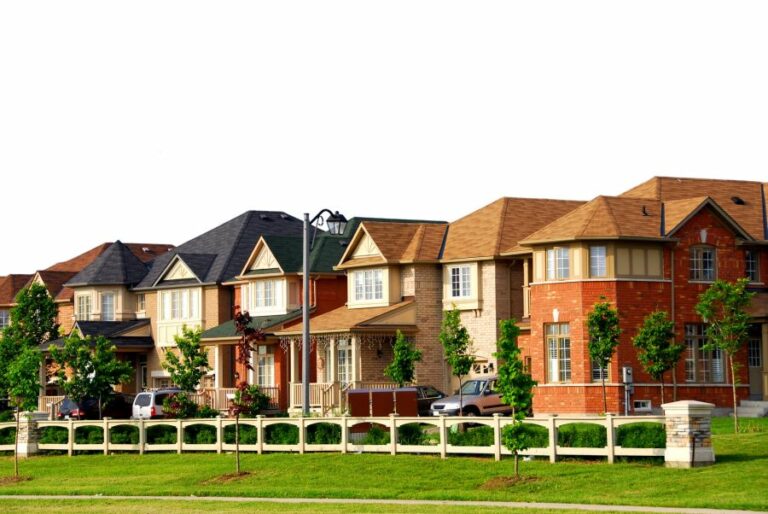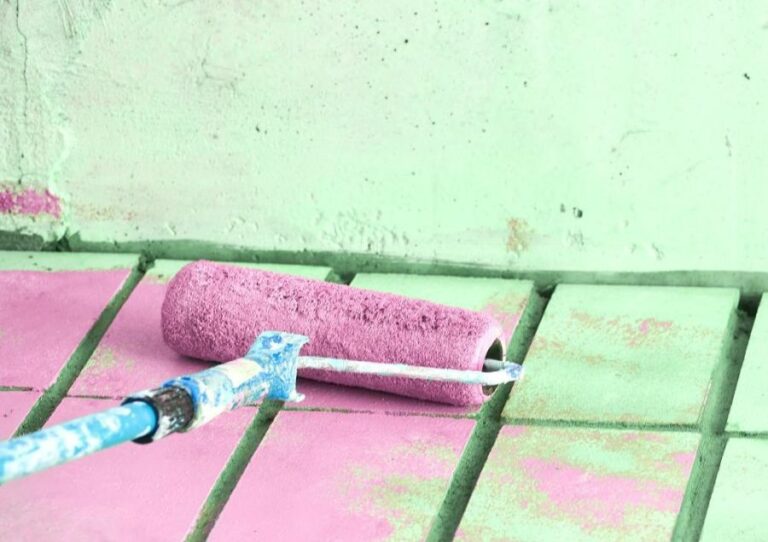Primer Types And Applications For Diverse Surfaces
Are you overwhelmed by the wide array of primer types and unsure about which one is best suited for your specific surface needs? Fear not because we have all the answers you need to make the right decision. Here, we will explore various primer types and their ideal applications for diverse surfaces, ensuring a flawless paint job that lasts.
Primer types and applications for diverse surfaces:
Primers create a bond between surfaces and paint, ensuring an optimal paint job. Water-based primers suit drywall, plaster, wood, and previously painted surfaces. Oil-based primers work well on unfinished wood, water stains, and MDF. Shellac primers excel at blocking severe stains and odors, as well as sealing bleeding wood. For concrete, masonry, and metal, use specialized primers designed for these substrates.

Explore the world of primers and their various types designed to enhance the longevity and appearance of your paintwork. Discover how choosing the right primer for diverse surfaces can be a game changer. Read on for expert tips and top recommendations.
Contents
Versatile Primer Types and Their Uses on Various Surfaces
Every painting project requires a proper foundation for optimum results. That’s where primers come in handy. Primers are specifically designed to create a bond between the substrate (surface) and the paint.
• Water-Based Primers
Water-based primers, also known as acrylic or latex primers, are versatile and suitable for a wide range of surfaces. These primers have low volatile organic compounds (VOCs) and are environmentally friendly. They dry quickly, typically within an hour, and can be easily cleaned with just soap and water.
– Recommended Applications:
- Drywall: Water-based primers are excellent for new gypsum wallboard (drywall) because they even out the surface’s porosity and reduce the differences in texture between the paper and joint compound.
- Plaster: Old plaster walls should be primed with acrylic primers to prevent paint from being absorbed and drying unevenly.
- Wood: Although water-based primers can be used on wood, they might raise the grain, requiring sanding. For better adhesion and sealing, use oil-based or shellac primers.
- Previously painted surfaces: Water-based primers work well on previously painted surfaces in good condition, allowing for color changes or re-coating.
- Galvanized metal: Acrylic primers are suitable for clean, non-corroded galvanized metal. Etching primer or self-etching primer is a better choice for highly corroded surfaces or bare metals.
• Oil-Based Primers
Oil-based primers, also known as alkyd or solvent-based primers, are highly effective for a variety of surfaces. They provide excellent adhesion, stain-blocking, and tannin-blocking properties, making them suitable for surfaces that may bleed through the paint.
However, they have high VOC content, can be challenging to clean, and require longer drying times than water-based primers.
– Recommended Applications:
- Unfinished or bare wood: Oil-based primers penetrate the wood surface, sealing it and providing a suitable base for painting. They are ideal for stained, knotty or tannin-rich woods such as pine or oak that might bleed through the paint.
- Water stains or smoke-damaged surfaces: Oil-based primers are highly effective in sealing and blocking difficult stains and odors.
- MDF (medium-density fiberboard): Oil-based primers ensure a smooth finish on MDF, sealing its porous surface prior to painting.
• Shellac Primers
Shellac primers are based on natural resins, having high alcohol content as their solvent. They offer excellent adhesion and stain blocking, even for the most difficult stains. Shellac primers can be applied on a wide range of surfaces, but they are less common compared to water-based and oil-based primers.
– Recommended Applications:
- Severe stains and odors: Shellac primers are the ultimate solution for blocking stubborn stains from water, smoke, nicotine, and ink. They also seal odors from damaged surfaces.
- Bleeding woods: Shellac primers are highly effective in sealing and preventing tannin bleed-through from certain woods, such as redwood and cedar.
- Restoration work: Shellac primers are widely used in restoration projects, as they provide a stable base for painting and adhere to virtually any surface.
• Concrete, Masonry, and Metal Primers
Concrete, masonry, and metal surfaces require specialty primers to ensure proper adhesion, corrosion resistance, and protection from the elements.
– Recommended Applications:
- Concrete and masonry: Concrete, masonry, and stucco surfaces need specialized primers that address the unique challenges of alkalinity, porosity, and surface texture. These primers are formulated to prevent paint from peeling, flaking, or blistering.
- Metals: Metal primers come in various formulations, including etching primers and rust converters, to ensure the proper acceptance and performance of the topcoat. Choose the most suitable primer for the metal type and the conditions it will be exposed to.
• Conclusion
Each primer type has its advantages, disadvantages, and specific applications. Always consider the substrate’s characteristics and intended use when choosing a primer for optimum results.
Using the appropriate primer will ensure a durable, attractive, and long-lasting paint job while also significantly contributing to the longevity of the surface.
Primer Type | Application | Surface |
|---|---|---|
Oil-based Primer | Provides a durable base for topcoats; seals porous surfaces; resists mildew | Wood, masonry, metal |
Latex Primer | Fast-drying; seals porous surfaces; resists mildew and stains | New drywall, plaster, concrete, masonry, previously painted surfaces |
Shellac-based Primer | Sticks to hard-to-coat surfaces; dry fast; good for sealing knots, stains, and odors | Wood, plaster, wallboard, metal, plastic |
High-Build Primer | Provides a thick coating that fills in small imperfections; levels uneven surfaces | New or damaged drywall, plaster |
Masonry Primer | Seals concrete and masonry; prevents alkalinity and efflorescence | New, bare, or previously coated concrete, masonry, stucco, and some painted surfaces |
Metal Primer | Provides corrosion protection; adheres well to smooth surfaces | New or previously coated iron, steel, aluminum, galvanized metal |
Bonding Primer | Adheres to slick, glossy, or hard-to-coat surfaces | Ceramic tile, glass, glossy surfaces, PVC pipe, plastic, fiberglass |
Selecting the Right Primer for Different Surface Types
When it comes to painting different surfaces, using the right type of primer is crucial for achieving a professional finish. Primers act as a base layer, ensuring proper adhesion of the paint and enhancing its durability.
• Oil-Based Primers
Oil-based primers are a versatile and widely-used option for priming various surfaces. They provide excellent adhesion and stain-blocking properties, making them an excellent choice for various interior and exterior surfaces.
– Wood Surfaces
When dealing with bare or stained wood surfaces, an oil-based primer is an ideal choice. It helps prevent the wood’s natural tannins from bleeding through the paint, ensuring a smooth and uniform finish.
Oil-based primers are also suitable for exterior wood surfaces, as they protect against weather damage and reduce the risk of paint peeling.
– Metal Surfaces
Oil-based primers are an excellent option when priming metal surfaces, particularly ferrous metals (e.g., iron and steel). They inhibit rust formation and provide a durable base for the paint. However, it’s essential to clean and prepare the metal surface before applying the primer to ensure proper adhesion.
• Water-Based (Latex) Primers
Water-based primers, commonly referred to as latex primers, are another popular choice due to their ease of use and fast-drying properties. They work well on various surfaces and have low levels of toxic emissions (VOCs), making them more environmentally friendly.
– Drywall Surfaces
For new or patched drywall surfaces, latex primers are the go-to option. They provide a uniform base for the paint without raising the drywall’s paper fibers. Additionally, they are easy to sand, ensuring a smooth finish after painting.
– Softwoods and Hardwoods
Latex primers can be used on both interior and exterior softwood and hardwood surfaces. They allow for good adhesion and even paint coverage, resulting in a professional-looking finish.
– Masonry and Concrete Surfaces
Latex primers are suitable for priming masonry and concrete surfaces. They help seal porous surfaces and stabilize crumbling areas, ensuring a sturdy base for paint application.
When using latex primers on exterior masonry surfaces, look for products specifically designed for exterior use to ensure adequate protection from moisture and weather-related damages.
• Shellac-Based Primers
Shellac-based primers are an excellent choice for surfaces requiring heavy-duty stain-blocking or odor-blocking properties. They are known for their fast-drying time and exceptional adhesion, making them ideal for specific applications.
– Severe Stains and Odors
Shellac-based primers are highly effective at blocking severe stains, such as water damage, smoke damage, or rust. They are also excellent for sealing in odors, making them a top choice for restoration or remediation projects.
– Knots and Sap Streaks in Wood
When working with knotty or sappy woods, a shellac-based primer is highly recommended. It effectively seals in the knots and sap streaks, preventing them from bleeding through the paint and ruining the finish.
• Specialty Primers
In some cases, specific surfaces or conditions require the use of specialty primers designed for unique applications.
– Self-Etching Primers
For painting bare metal, especially non-ferrous metals such as aluminum, a self-etching primer is highly recommended. These primers contain an acidic component that etches the metal, ensuring optimal paint adhesion. An example of a self-etching primer application is in automotive painting.
– High-Build Primers
High-build primers are designed to fill minor imperfections on surfaces, such as small cracks or scratches. They act as an all-in-one primer and filler, smoothing out the surface before painting.
– Mold and Mildew-Resistant Primers
When dealing with surfaces in areas with high moisture content or susceptible to mold and mildew growth, mold and mildew-resistant primers are an ideal choice. These primers contain antimicrobial agents that inhibit the growth of mold and mildew, ensuring a clean and healthy surface.
• Final Thoughts
Choosing the right primer for your surface is essential for achieving a professional and long-lasting finish. By understanding the different types of primers and their specific applications, you can ensure the best possible results for any painting project.
| Type of SurfaceType of Primer | |
|---|---|
| Wood | Oil-based primer |
| Galvanized Metal | Acrylic latex primer |
| Aluminum | Acrylic latex primer |
| Masonry | Concrete primer |
| Plaster | Oil-based primer |
| Glossy Painted Surface | Bonding primer |
| Stained Surface | Stain-blocking primer |
Top Primers Ideal for Composite Surface Applications
Composite materials have gained significant popularity in recent years, especially in the construction and automotive industries.
These materials typically consist of two or more constituent materials combined to create a product with improved properties, like increased strength, durability, and resistance to climate conditions.
Therefore, selecting the right primer for composite surfaces is essential to ensure a long-lasting and effective bond between the substrate and paint.
• Epoxy Primers
Epoxy primers are among the most popular options for composite surfaces due to their strong adhesive properties and corrosion resistance. They are typically two-component systems consisting of a resin and hardener, which need to be mixed before application.
Epoxy primers adhere well to a variety of composite materials, such as carbon fiber, fiberglass, and plastic composites.
I recommend the use of epoxy primers for composite surfaces that require high durability and chemical resistance. These primers are suitable for both interior and exterior applications, making them a versatile option.
• Acrylic Primers
Acrylic primers are another viable option for composite surfaces. They are water-based and provide excellent adhesion, quick drying times, and low odor.
These primers can be used on a variety of composite materials, such as plastic, fiberglass, and treated wood. Additionally, acrylic primers are UV-resistant, making them suitable for outdoor applications.
As a professional, I recommend acrylic primers for composite surfaces that require a more eco-friendly and user-friendly option. They are ideal for both interior and exterior applications and work well in combination with acrylic paints.
• Polyurethane Primers
Polyurethane primers offer excellent flexibility, chemical resistance, and abrasion resistance, making them suitable for composite surfaces experiencing significant wear and tear. This type of primer is ideal for bonding with various composite materials, such as carbon fiber, fiberglass, and plastics.
I recommend polyurethane primers for composite surfaces that require a high-performance primer with robust resistance to harsh environments and heavy usage. These primers are suitable for both interior and exterior applications.
• Primer Additives
Certain additives can be used to enhance the performance of primers on composite surfaces. For instance, adhesion promoters can improve the bond between the primer and substrate, while flex agents can increase the flexibility of the primer, making it more resistant to cracking and peeling.
I recommend exploring primer additives when dealing with complex or specialized composite surfaces to ensure optimal performance.
• Application Tips for Composite Surface Primers
- Surface Preparation: Properly preparing the composite surface is crucial for optimal primer adhesion. Make sure to clean the substrate thoroughly, removing any dirt, dust, grease, and oils. Additionally, sanding or abrading the surface can improve adhesion.
- Primer Mixing: For two-component systems such as epoxy primers, make sure to follow the manufacturer’s mixing instructions carefully to achieve the desired film thickness and performance.
- Application Techniques: Use appropriate application techniques, such as spray, brush, or roller, depending on the primer type, surface size, and accessibility. Ensure a uniform coat to maximize coverage, adhesion, and performance.
- Drying Times: Follow the manufacturer’s guidelines for drying times between primer application and paint. Allowing sufficient time for the primer to cure ensures an optimal bond between the composite surface and paint.
- Compatibility: Ensure the primer is compatible with both the composite substrate and the topcoat. Incorrect primer selection may lead to adverse effects such as peeling, cracking, or poor adhesion.
In conclusion, choosing the right primer for composite surfaces is vital for optimal adhesion, durability, and appearance. Based on my experience, epoxy, acrylic, and polyurethane primers are generally the best options for composite materials, with each offering unique benefits.
Consider the specific needs of your composite surface and follow application guidelines to achieve the best results.







